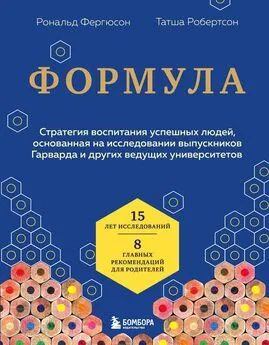Шахида Араби - Токсичные люди. Как защититься от нарциссов, газлайтеров, психопатов и других манипуляторов
- Название:Токсичные люди. Как защититься от нарциссов, газлайтеров, психопатов и других манипуляторов
- Автор:
- Жанр:
- Издательство:Литагент МИФ без БК
- Год:2021
- Город:Москва
- ISBN:9785001696728
- Рейтинг:
- Избранное:Добавить в избранное
-
Отзывы:
-
Ваша оценка:
Шахида Араби - Токсичные люди. Как защититься от нарциссов, газлайтеров, психопатов и других манипуляторов краткое содержание
Для всех, кто хочет устанавливать свои правила в общении с токсичными людьми и не позволять манипулировать собой.
На русском языке публикуется впервые.
Токсичные люди. Как защититься от нарциссов, газлайтеров, психопатов и других манипуляторов - читать онлайн бесплатно ознакомительный отрывок
Интервал:
Закладка:
Bovenizer, S. 2017. “The Limbic System.” Accessed July 1, 2019. https://suebovenizer.com/the-limbic-system.
Bowen, S., N. Chawla, S. E. Collins, K. Witkiewitz, S. Hsu, J. Grow, S. Clifasefi et al. 2009. “Mindfulness-Based Relapse Prevention for Substance Use Disorders: A Pilot Efficacy Trial.” Substance Abuse 30(4): 295–305.
Brach, T. 2020. Radical Compassion: Learning to Love Yourself and Your World with the Practice of RAIN. London: Rider Books.
Bradshaw, J. 1990. Homecoming: Reclaiming and Championing Your Inner Child. London: Piatkus.
Brummelman, E., S. Thomaes, S. A. Nelemans, B. O. Castro, G. Overbeek, and B. J. Bushman. 2015. “Origins of Narcissism in Children.” Proceedings of the National Academy of Sciences 112(12): 3659–3662.
Buttafuoco, M. J., and J. McCarron, J. 2009. Getting It Through My Thick Skull: Why I Stayed, What I Learned, and What Millions of People Involved with Sociopaths Need to Know. Deerfield Beach, FL: Health Communications.
Caddick, N., and B. Smith. 2017. “Combat Surfers: A Narrative Study of Veterans, Surfing, and War Trauma.” Movimento 23(1): 35.
Carek, P. J., S. E. Laibstain, and S. M. Carek. 2011. “Exercise for the Treatment of Depression and Anxiety.” International Journal of Psychiatry in Medicine 41(1): 15–28.
Carlson B., P. A. Palmieri, N. P. Field, C. J, Dalenberg, K. S. Macia, K. S., and D. A. Spain. 2016. “Contributions of Risk and Protective Factors to Prediction of Psychological Symptoms After Traumatic Experiences.” Comprehensive Psychiatry , 69: 106–115.
Carnell, S. 2012. “Bad Boys, Bad Brains.” Psychology Today, May 14. https://www.psychologytoday.com/blog/bad-appetite/201205/bad-boys-bad-brains.
Carnes, P. P. 2015. Betrayal Bond: Breaking Free of Exploitive Relationships.
Deerfield Beach, FL: Health Communications.
Carter, S. B. 2012. “Emotions Are Contagious – Choose Your Company Wisely.” Psychology Today, October 20. Accessed October 12, 2018. https://www.psychologytoday.com/us/blog/high-octane-women/201210/emotions-are-contagious-choose-your-company-wisely.
Carver, J. 2014. “Stockholm Syndrome: The Psychological Mystery of Loving an Abuser.” CounsellingResource.com, December 20.
Accessed February 28, 2019. https://counsellingresource.com/therapy/self-help/stockholm/2/.
Cascio, C. N., M. B. O’Donnell, F. J. Tinney, M. D. Lieberman, S. E. Taylor, V. J. Strecher, and E. B. Falk. 2015. “Self-Affirmation Activates Brain Systems Associated with Self-Related Processing and Reward and Is Reinforced by Future Orientation.” Social Cognitive and Affective Neuroscience 11(4): 621–629.
Clark, A., and A. T. Beck. 2011. Cognitive Therapy of Anxiety Disorders: Science and Practice. New York: Guilford Press.
Collinge, W., J. Kahn, and R. Soltysik. 2012. “Promoting Reintegration of National Guard Veterans and Their Partners Using a Self-Directed Program of Integrative Therapies: A Pilot Study.” Military Medicine 177(12): 1477–1485.
Craig, A. D. 2009. “How Do You Feel – Now? The Anterior Insula and Human Awareness.” Nature Reviews Neuroscience 10(1): 59–70.
Craig, G. 2011. The EFT Manual. Santa Rosa, CA: Energy Psychology Press. Creswell, J. D., J. M. Dutcher, W. M. Klein, P. R. Harris, and J. M. Levine. 2013. “Self-Affirmation Improves Problem-Solving Under Stress.” PLoS ONE 8(5).
De Becker, G. 2010. The Gift of Fear: Survival Signals That Protect Us from Violence. London: Bloomsbury.
Drexler, S. M., C. J. Merz, T. C. Hamacher-Dang, M. Tegenthoff, and O. T. Wolf. 2015. “Effects of Cortisol on Reconsolidation of Reactivated Fear Memories.” Neuropsychopharmacology 40(13): 3036–3043.
Durvasula, R. 2018. “Narcissist, Psychopath, or Sociopath: How to Spot the Differences.” Medcircle.com, August 8. Accessed October 9, 2018. https://www.youtube.com/watch?v=6dv8zJiggBs.
Dutton, D. G., and A. P. Aron. 1974. “Some Evidence for Heightened Sexual Attraction Under Conditions of High Anxiety.” Journal of Personality and Social Psychology 30(4): 510–517.
Elliott, S. 2009. Getting Past Your Breakup: How to Turn a Devastating Loss into the Best Thing That Ever Happened to You. Cambridge, MA: Da Capo Lifelong.
Felitti, V. J., R. F. Anda, D. Nordenberg, D. F. Williamson, A. M. Spitz, V. Edwards, M. P. Koss, and J. S. Marks. 1998. “Relationship of Child-hood Abuse and Household Dysfunction to Many of the Leading Causes of Death in Adults.” American Journal of Preventive Medicine 14(4): 245–258.
Ferster, C. B., and B. F. Skinner. 1957. Schedules of Reinforcement. New York: Appleton-Century-Crofts.
Fetzner, M. G., and G. J. Asmundson. 2014. “Aerobic Exercise Reduces Symptoms of Posttraumatic Stress Disorder: A Randomized Controlled Trial.” Cognitive Behaviour Therapy 44(4): 301–313.
Field, T., M. Hernandez-Reif, M. Diego, S. Schanberg, and C. Kuhn. 2005. “Cortisol Decreases and Serotonin and Dopamine Increase Following Massage Therapy.” International Journal of Neuroscience 115(10): 1397–1413.
Fisher, H. E. 2016. “Love Is Like Cocaine.” Nautilus, February 4. http://nautil.us/issue/33/attraction/love-is-like-cocaine.
Fowler, J. S., N. D. Volkow, C. A. Kassed, and L. Chang. 2007. “Imaging the Addicted Human Brain.” Science & Practice Perspectives 3(2): 4–16.
Geraci, L., and S. Rajaram. 2016. “The Illusory Truth Effect: The Distinc-tiveness Effect in Explicit and Implicit Memory.” Distinctiveness and Memory, 210–234.
Glenn, A. L., and A. Raine. 2014. Psychopathy: An introduction to biological findings and their implications . New York: New York University Press.
Gottman, J. M. 1994. Why Marriages Succeed or Fail: And How You Can Make Your Marriage Last. New York: Simon & Schuster.
Goulston, M. 2012. “Rage – Coming Soon from a Narcissist Near You.” Psychology Today, February 9. Accessed February 11, 2019. https://www.psychologytoday.com/us/blog/just-listen/201202/rage-coming-soon-narcissist-near-you.
Greene, R. 2004. The Art of Seduction. Eastbourne, UK: Gardners Books. Grohol, J. 2019. “An Overview of Dialectical Behavior Therapy.”
PsychCentral.com, June 19. Accessed February 9, 2020. https://psychcentral.com/lib/an-overview-of-dialectical-behavior-therapy.
Gudjonsson, G. H., and J. F. Sigurdsson. 2003. “The Relationship of Compliance with Coping Strategies and Self-Esteem.” European Journal of Psychological Assessment 19(2): 117–123.
Handlin, L., M. Petersson, and K. Uvnãs-Moberg. 2015. “Self-Soothing Behaviors with Particular Reference to Oxytocin Release Induced by Non-noxious Sensory Stimulation.” Frontiers in Psychology 5: 1529.
Hasher, L., D. Goldstein, and T. Toppino. 1977. “Frequency and the Conference of Referential Validity.” Journal of Verbal Learning and Verbal Behavior 16(1): 107–112.
Hatfield, E., J. T. Cacioppo, and R. L. Rapson. 2003. Emotional Contagion. Cambridge, UK: Cambridge University Press.
Hay, L. L. 2016. Mirror Work: 21 Days to Heal Your Life. Carlsbad, CA: Hay House.
Herdieckerhoff, E. 2016. “The Gentle Power of Highly Sensitive People.” Speech presented at TEDxIHEParis, Paris, November. https://www.youtube.com/watch?v=pi4JOlMSWjo.
Impett, E. A., A. Kogan, T. English, O. John, C. Oveis, A. M. Gordon, and D. Keltner. 2012. “Suppression Sours Sacrifice.” Personality and Social Psychology Bulletin 38(6): 707–720.
Jagiellowicz, J., X. Xu, A. Aron, E. Aron, G. Cao, T. Feng, and X. Weng. 2011. “The Trait of Sensory Processing Sensitivity and Neural Responses to Changes in Visual Scenes.” Social Cognitive and Affective Neuroscience 6(1): 38–47.
Jiang, H., M. P. White, M. D. Greicius, L. C. Waelde, and D. Spiegel. 2017. “Brain Activity and Functional Connectivity Associated with Hypnosis.” Cerebral Cortex 27(8): 4083–4093.
Kaiser, P., D. Kohen, M. Brown, R. Kajander, and A. Barnes. 2018. “Integrating Pediatric Hypnosis with Complementary Modalities: Clinical Perspectives on Personalized Treatment.” Children 5(8): 108.
Kernberg, O. F. 1984. Severe Personality Disorders: Psychotherapeutic Strategies. New Haven, CT: Yale University Press.
Kim, H., S. M. Schneider, L. Kravitz, C. Mermier, and M. R. Burge. 2013. “Mind-Body Practices for Posttraumatic Stress Disorder.” Journal of Investigative Medicine 61(5): 827–834.
Kimonis, E. R., P. J. Frick, E. Cauffman, A. Goldweber, and J. Skeem. 2012. “Primary and Secondary Variants of Juvenile Psychopathy Differ in Emotional Processing.” Development and Psychopathology, 24 (3): 1091–1103.
Klein, S. 2013. “Adrenaline, Cortisol, Norepinephrine: The Three Major Stress Hormones, Explained.” HuffPost.com, April 19. http://www.huffingtonpost.com/2013/04/19/adrenaline-cortisol-stress-hormones_n_3112800.html.
Korb, A. 2011. “Boosting Your Serotonin Activity.” Psychology Today , November 17. Accessed July 1, 2019. https://www.psychologytoday.com/us/blog/prefrontal-nudity/201111/boosting-your-serotonin-activity.
Kuster, M., S. Backes, V. Brandstätter, F. W. Nussbeck, T. N. Bradbury, D. Sutter-Stickel, and G. Bodenmann. 2017. “Approach-Avoidance Goals and Relationship Problems, Communication of Stress, and Dyadic Coping in Couples.” Motivation and Emotion 41(5): 576–590.
Lange, J., D. L. Paulhus, and J. Crusius. 2017. “Elucidating the Dark Side of Envy: Distinctive links of benign and malicious envy with dark personalities.” Personality and Social Psychology Bulletin , 44(4): 601‒614.
Lazar, S. W., J. Carmody, M. Vangel, C. Congleton, S. M. Yerramsetti, T. Gard, and B. K. Hölzel. 2011. “Mindfulness Practice Leads to Increases in Regional Brain Gray Matter Density.” Psychiatry Research: Neuroimaging 191(1): 36–43.
Linehan, M. M. 2014. DBT Skills Training Manual. New York: Guilford Press. MacDonald, M., and S. Sherry. 2016. “N.S. Research Lays Out How to Recognize Narcissistic Perfectionists.” CTV News, April 22. Accessed February 9, 2020. https://www.ctvnews.ca/lifestyle/n-s-research-lays-out-how-to-recognize-narcissistic-perfectionists-1.2870230.
Marazziti, D., H. S. Akiskal, A. Rossi, and G. B. Cassano. 1999. “Alteration of the Platelet Serotonin Transporter in Romantic Love.” Psychological Medicine 29(3): 741–745.
Marsh, J., and V. Ramachandran. 2012. “Do Mirror Neurons Give Us Empathy?” Greater Good , March 29. Accessed October 12, 2018. https://greatergood.berkeley.edu/article/item/do_mirror_neurons_give_empathy.
Martinez-Lewi, L. 2018. “Are You Married to a Jekyll Hyde Covert Narcissist?” December 5. Accessed June 23, 2019. http://thenarcissistinyourlife.com/are-you-married-to-a-jekyll-hyde-covert-narcissist.
Mayer, F. S., C. M. P. Frantz, E. Bruehlman-Senecal, and K. Doliver. 2009. “Why Is Nature Beneficial? The Role of Connectedness in Nature.” Environment and Behavior 41: 607–643.
McKay, M., J. C. Wood, and J. Brantley. 2010. The Dialectical Behavior Therapy Skills Workbook: Practical DBT Exercises for Learning Mindfulness, Interpersonal Effectiveness, Emotion Regulation & Distress Tolerance. Oakland, CA: New Harbinger Publications.
Mikkelsen, K., L. Stojanovska, and V. Apostolopoulos. 2016. “The Effects of Vitamin B in Depression.” Current Medicinal Chemistry 23(38): 4317–4337.
Читать дальшеИнтервал:
Закладка:










